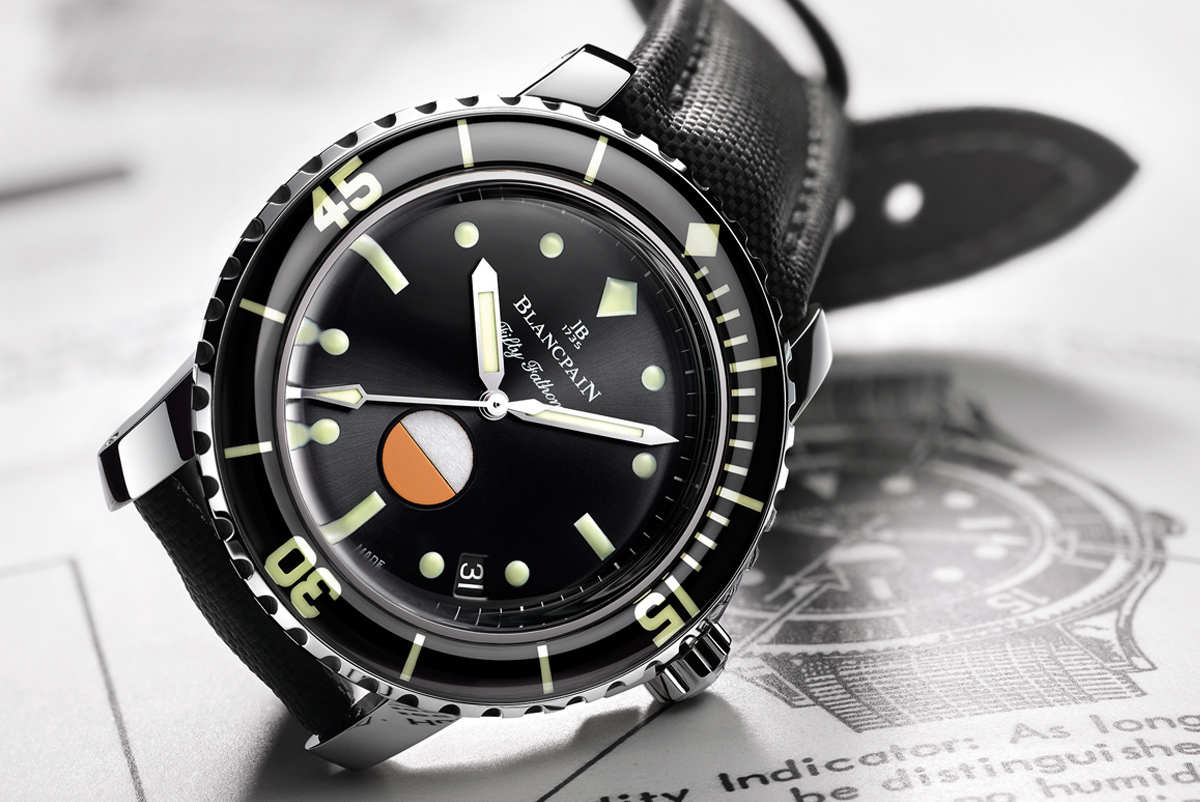Introducing the Bvlgari Octo Finissimo Chronograph GMT for The Rake & Revolution
Bvlgari's world record setting Octo Finissimo Chronograph GMT gets a “tool watch” makeover and an unexpected take on luminosity.

I remember the exact moment I set eyes on the Bvlgari Octo Finissimo Chronograph. Though it was just over a year ago, considering the mind-bending changes that have happened to the world in the interim, it seems like a lifetime ago. So before I get into the details of the special edition of this watch that Bvlgari's amazing creative director Fabrizio Buonamassa designed for us, I’d like to talk about these changes and how Bvlgari's reacted to them in a way I find truly admirable.
When the COVID-19 pandemic hit, Bvlgari's CEO Jean-Christophe Babin was one of the very first to respond: funding a 3D microscope to help researchers at Spallanzani Hospital study the virus at the cellular level; transforming a fragrance factory outside of Milan to produce hand sanitizer. And if the latter seems somewhat commonplace today, think back when the world and in particular Italy faced a total shortage of sanitizers and PPE amid the first wave of COVID-19.

CEO of Bvlgari Group, Jean-Christophe Babin 
Fabrizio Buonamassa, Director of Watch Design at Bvlgari 
2019: Octo Finissimo Chronograph GMT Automatic With its manufactured integrated movement that displays the classical chronograph functions, Octo Finissimo Chronograph GMT Automatic is the thinnest ever mechanical Chronograph in watchmaking history. The watch features a modern horizontally coupled, column wheel controlled chronograph with peripheral winding and a second time zone function, all within the 3.30mm thin movement, caliber BVL 318. (Image © Atom Moore) 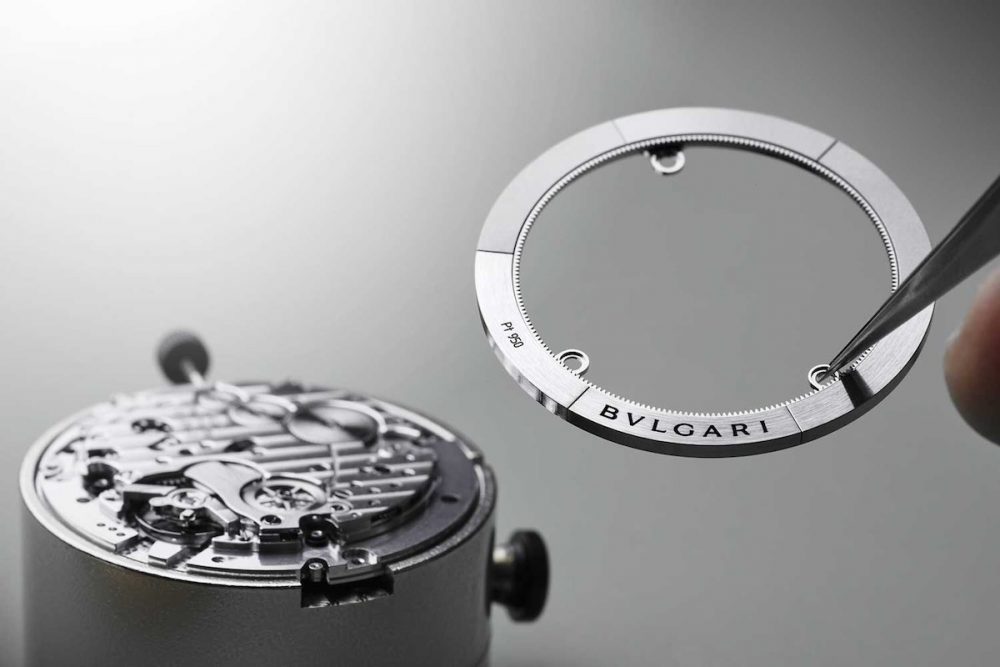
The platinum and aluminum periphery rotor of the BVL 318 movement powering the Octo Finissimo Chronograph GMT Automatic 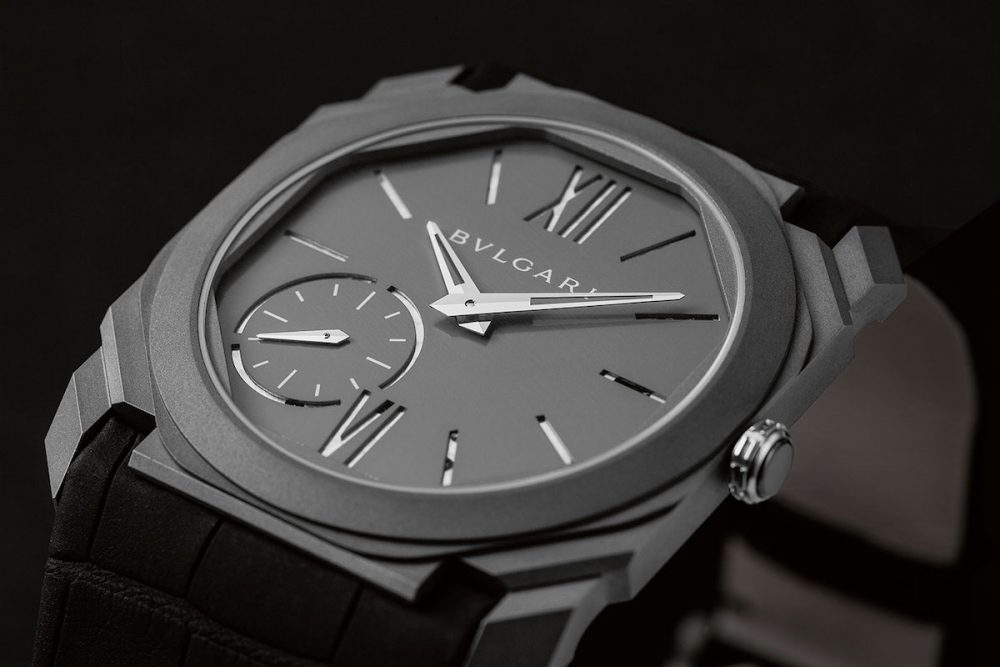
The 2016 Bvlgari x Revolution Octo Finisimmo Limited Edition (Image © Revolution) 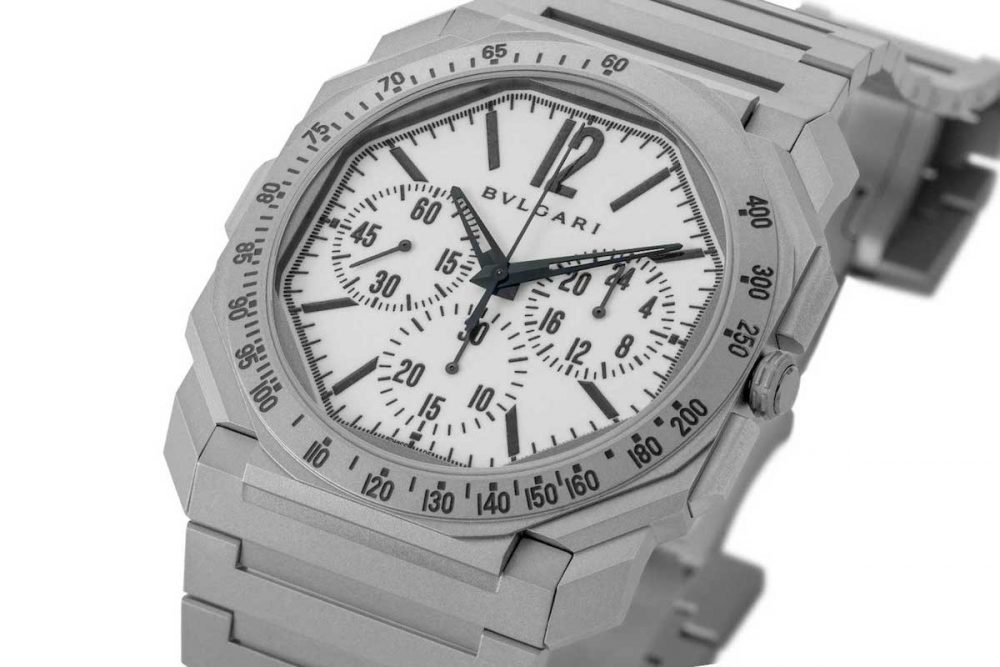
With the outstanding reception the Bvlgari Octo Finissimo Chronograph GMT "White Light" for Revolution & The Rake has received even before launch we had to rethink the total number we were going to produce from 15 to 25 pieces(©Revolution) 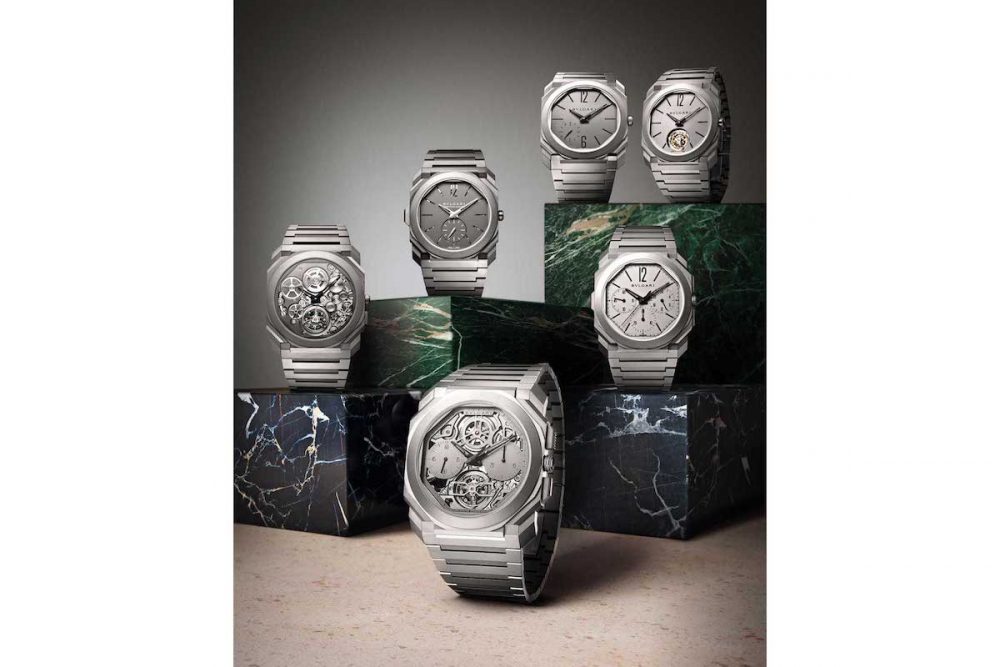
(From the top-right) 2014: Octo Finissimo Tourbillon Manual; 2017: Octo Finissimo Automatic 2016: Octo Finissimo Minute Repeater; 2018: Octo Finissimo Tourbillon Automatic; 2019: Octo Finissimo Chronograph GMT Automatic; 2020: Octo Finissimo Tourbillon Chronograph Skeleton Automatic 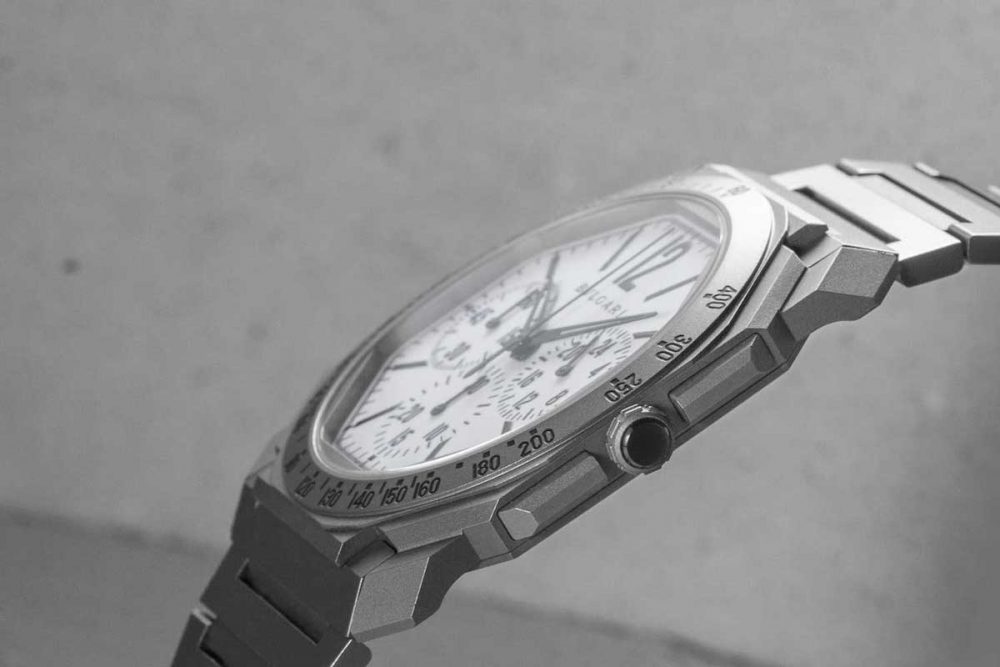
The Bvlgari Octo Finissimo Chronograph GMT for Revolution & The Rake case measures a slim 6.90 mm in thickness (Revolution) 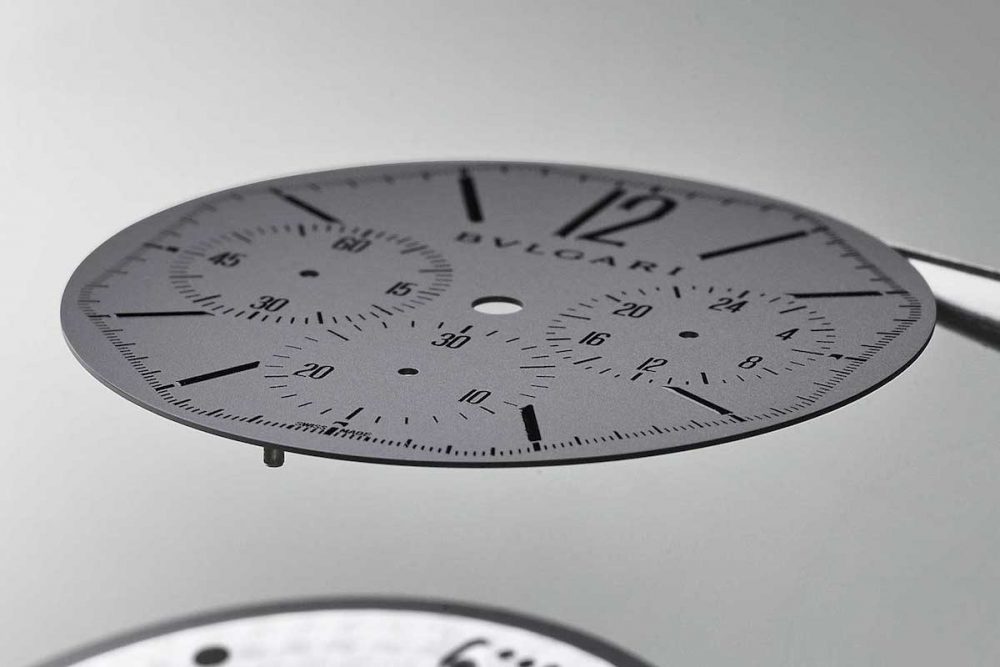
The dial of the regular version of the Bvlgari Octo Finissimo Chronograph GMT is a mere 0.2mm thick the indexes 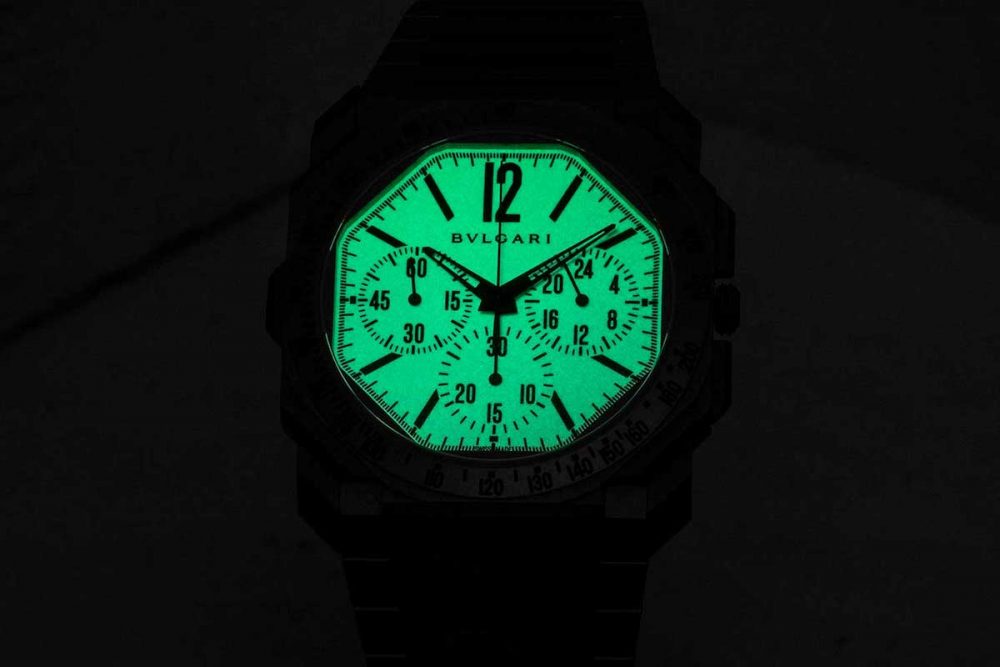
The 0.2mm thick dial of the Bvlgari Octo Finissimo Chronograph GMT for Revolution & The Rake completely covered in lume such that the indications stand out in negative relief (@Revolution) 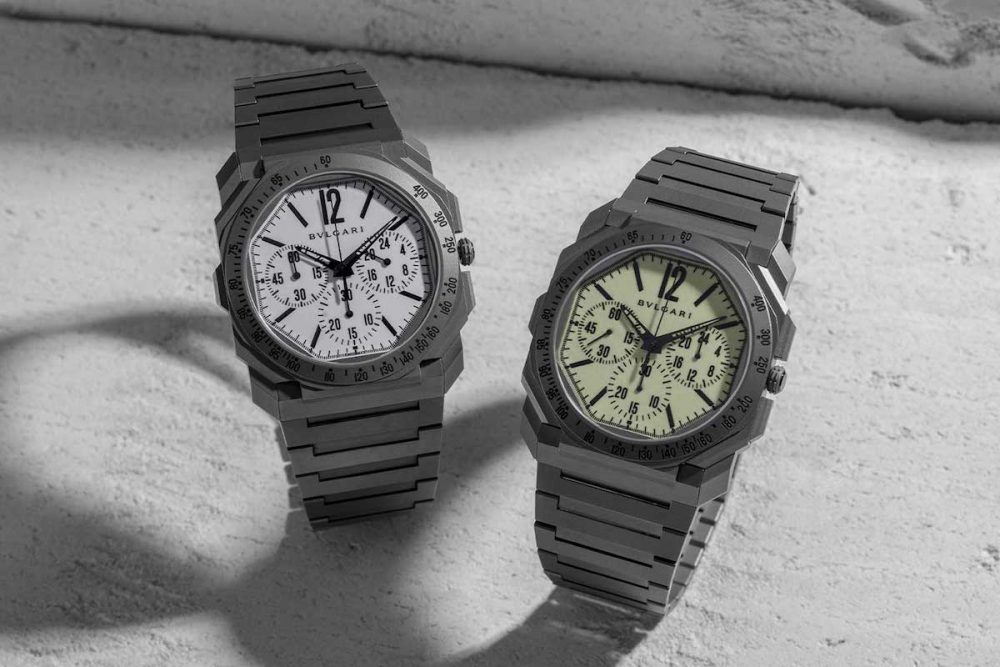
The Bulgari Octo Finissimo Chronograph GMT "White Light" for Revolution & The Rake on the left and the more aggressively lumed "Nuclear Option" on the right ©Revolution) 
The Bvlgari Octo Finissimo Chronograph GMT "White Light” for Revolution & The Rake (Revolution) 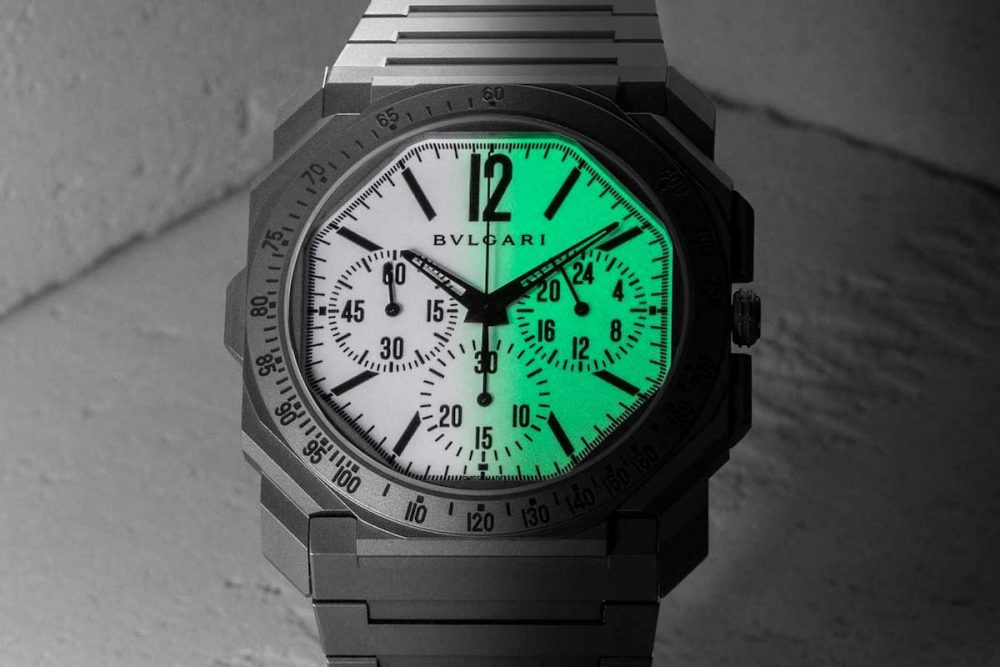
The Bulgari Octo Finissimo Chronograph GMT for Revolution & The Rake (©Revolution) 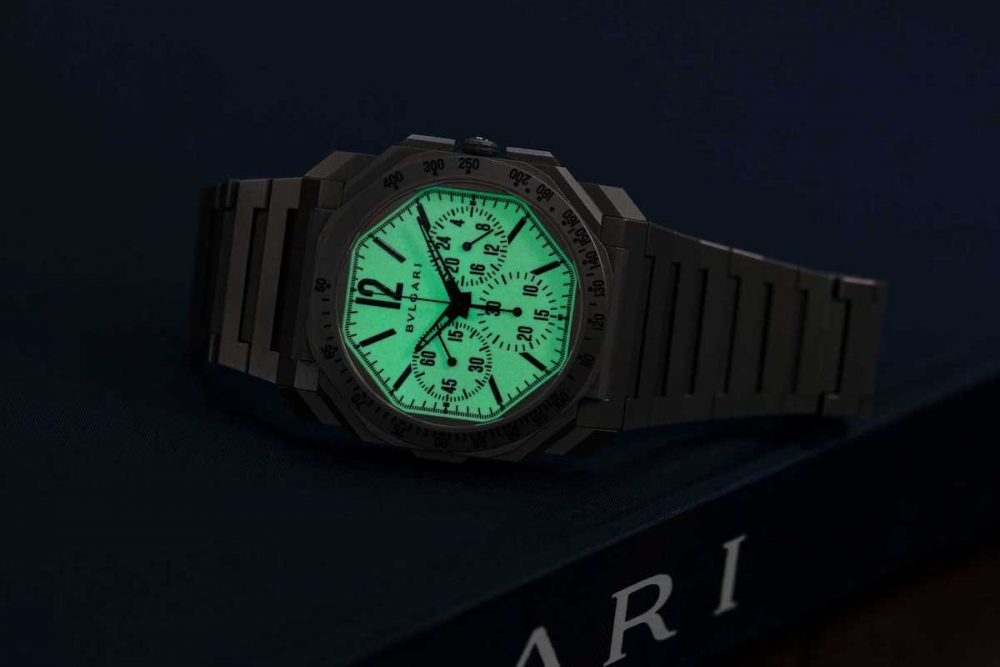
The 0.2mm thick dial of the Bvlgari Octo Finissimo Chronograph GMT "White Light" for Revolution & The Rake completely covered in lume such that the indications stand out in negative relief (©Revolution)












You could enjoy it in this format simply as a stunning sports chronograph with a truly innovative design. But then as soon as you enter an ambient or dark surrounding it glows strongly enough to provide perfect legibility. To be fair in a dark environment like a bar or nightclub, there is no getting away from the high visibility luminous optics, but then again this comes as more of a surprise rather just an extension of a watch that is always glowing. In the end, Buonomassa and I both loved this kind of split personality, the epitome of sporty elegant chic in the day and then this wild, larger than life spirit in the night. After much deliberation we decided to use the “White Light” dial for our limited edition. Amusingly we were initially only going to make 15 examples of this watch to commemorate Revolution’s 15th anniversary, but the resulting watch was so good that even within our own team we’ve had so many expressions of interest that we had to increase it to 25 pieces.

Technical Specifications Movement Self-winding BVL 318 Finissimo Extra-Thin Caliber (3.30 mm thick); hours and minutes; small running seconds at 9 o’clock; chronograph with 30-minute totalizer at 6 o’clock; GMT with 24-hour display at 3 o’clock; 55-hour power reserve Dial & hands White lacquered dial covered in SLN with black indexes; skeletonized hands in brass with black PVD treatment and polished finishing Case Diameter: 42mm, thickness 6.90mm; sandblasted titanium case with transparent back case; sandblasted titanium crown with ceramic insert; water resistant to 30m Bracelet Sandblasted titanium bracelet with folding clasp Price USD 17,300




